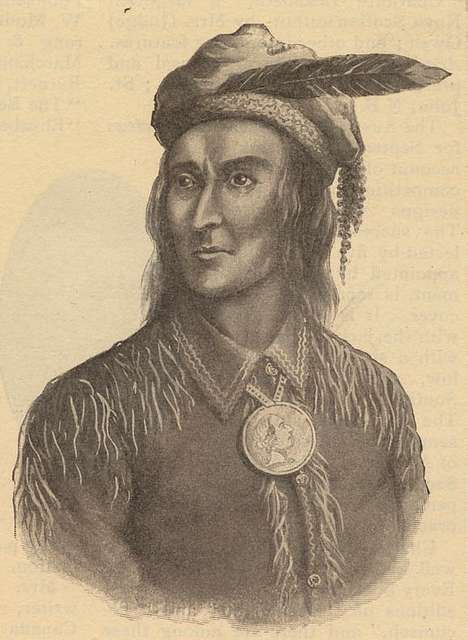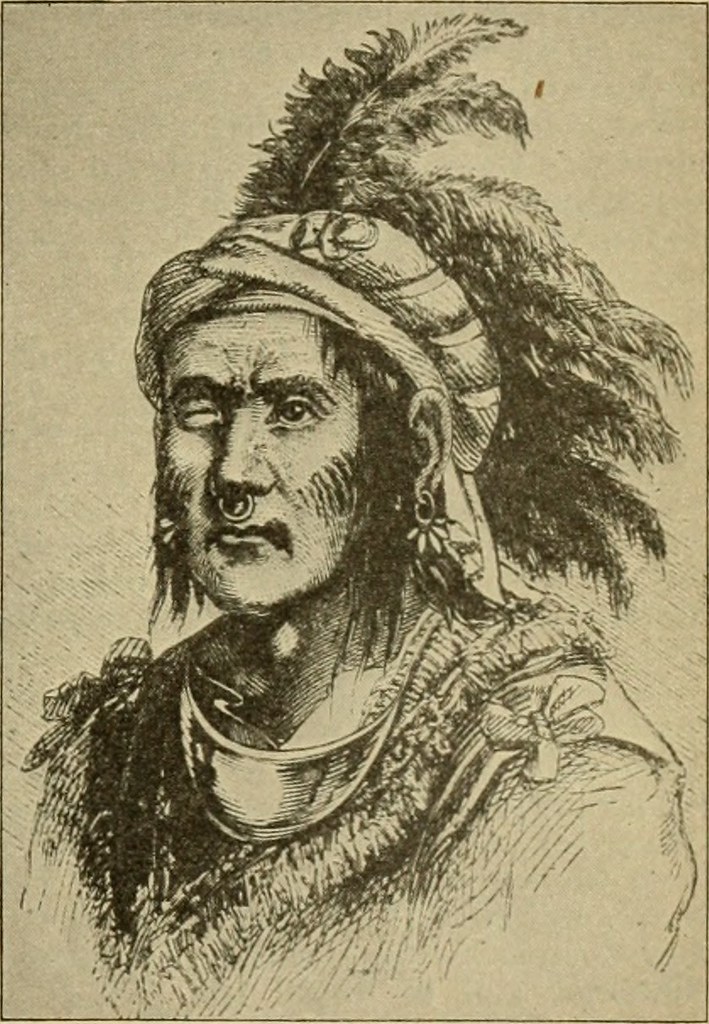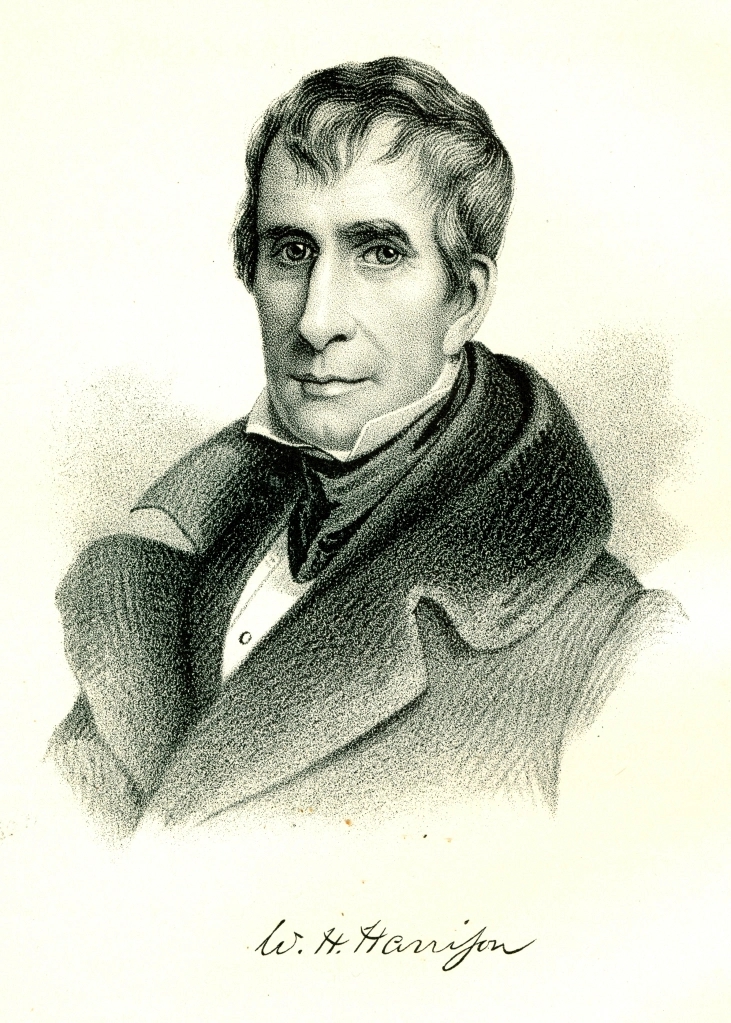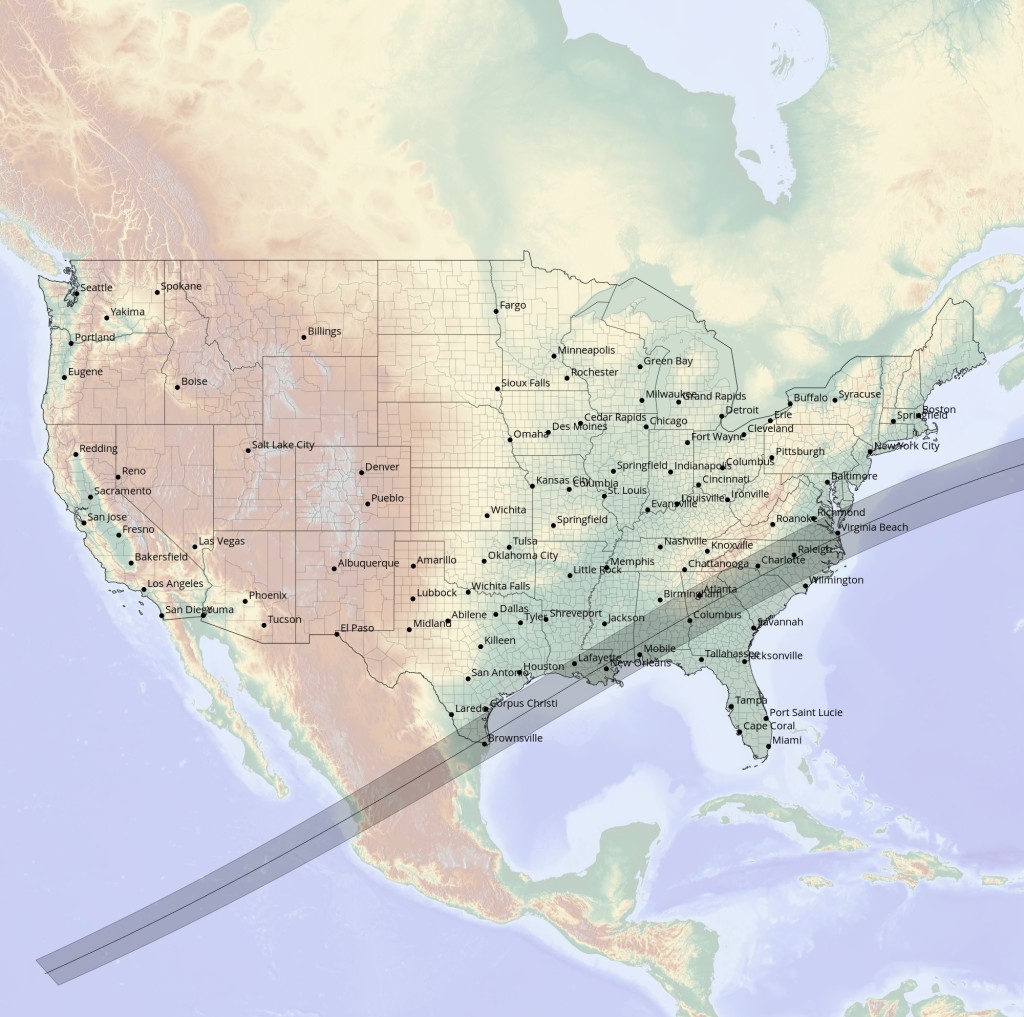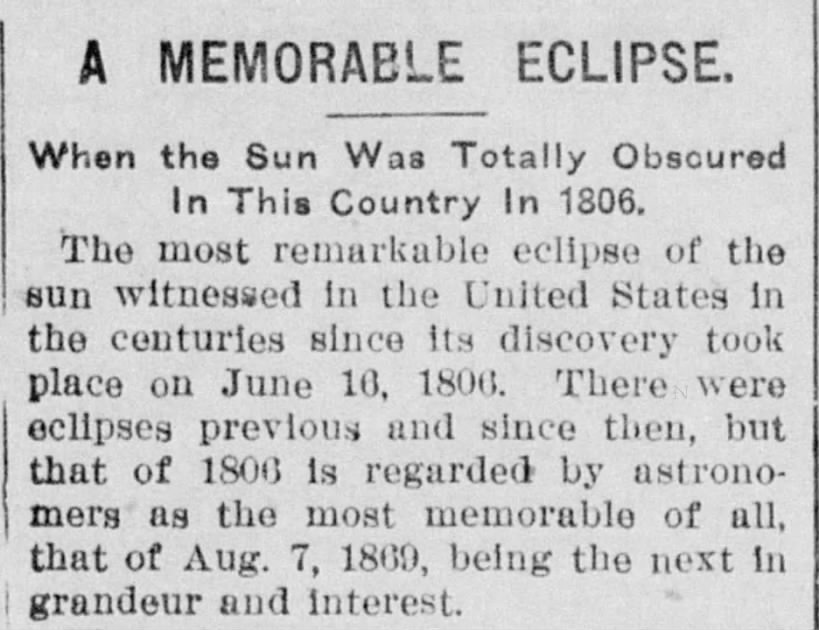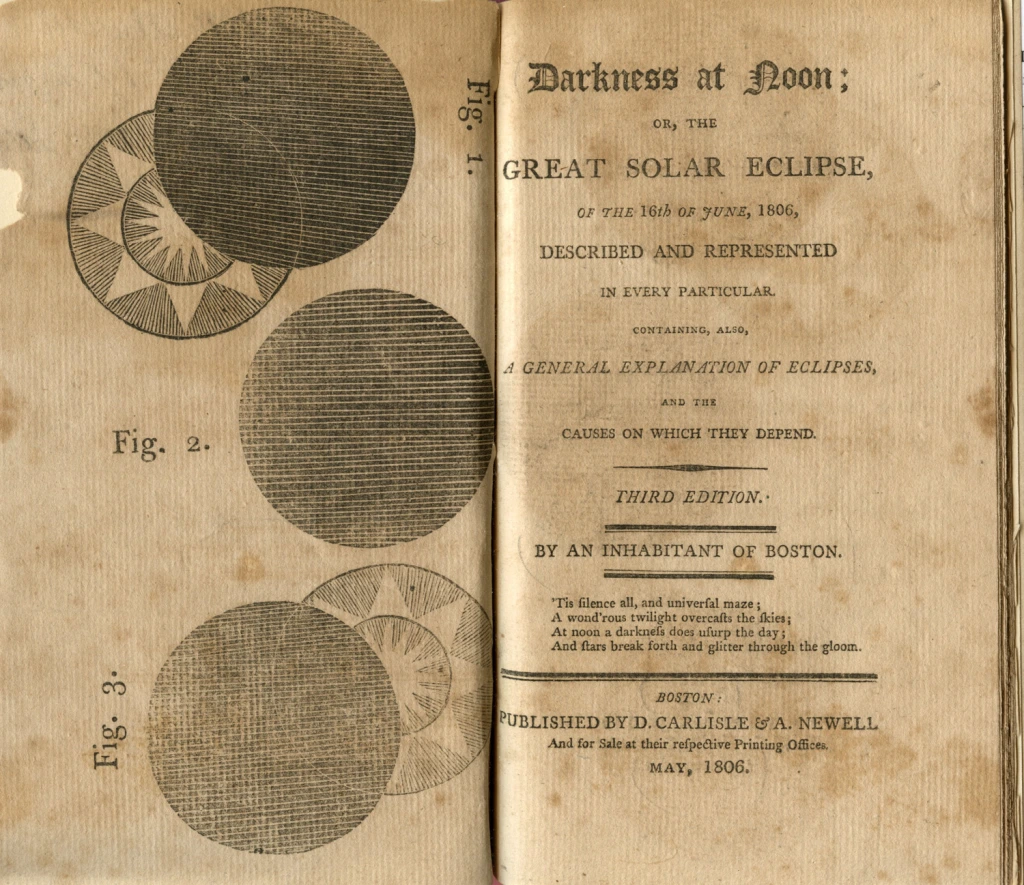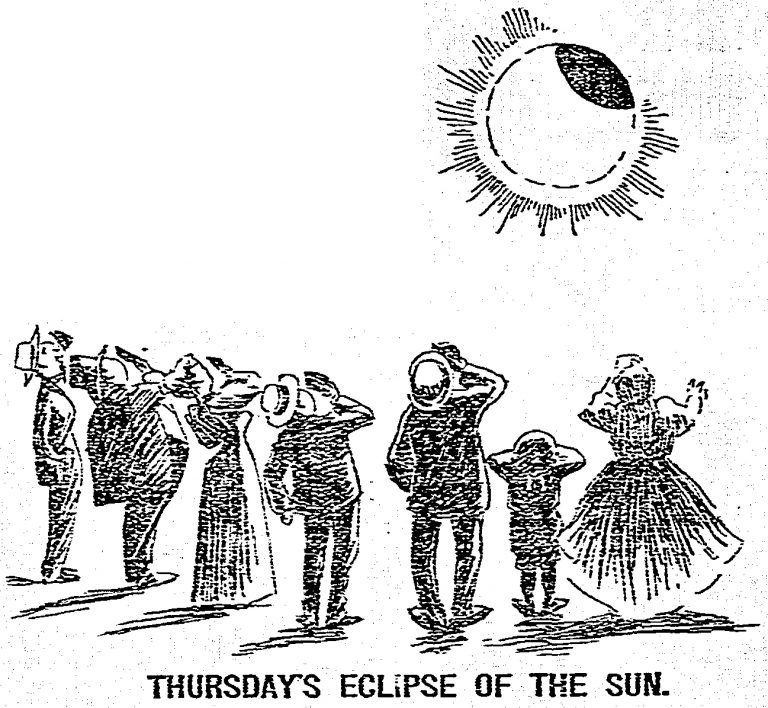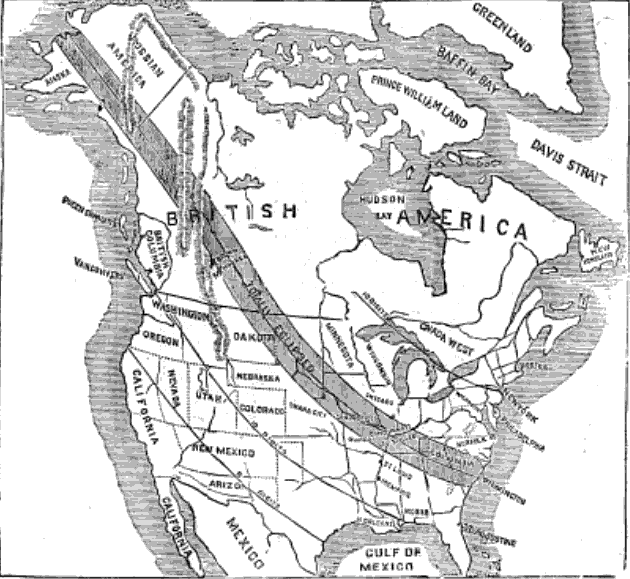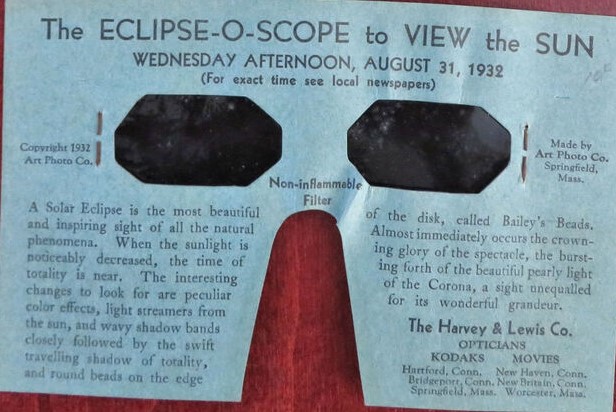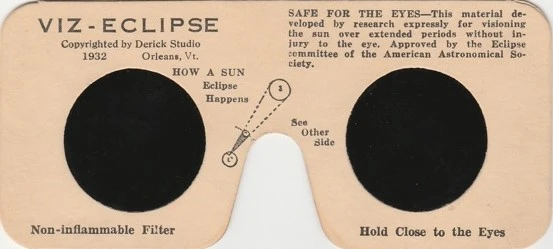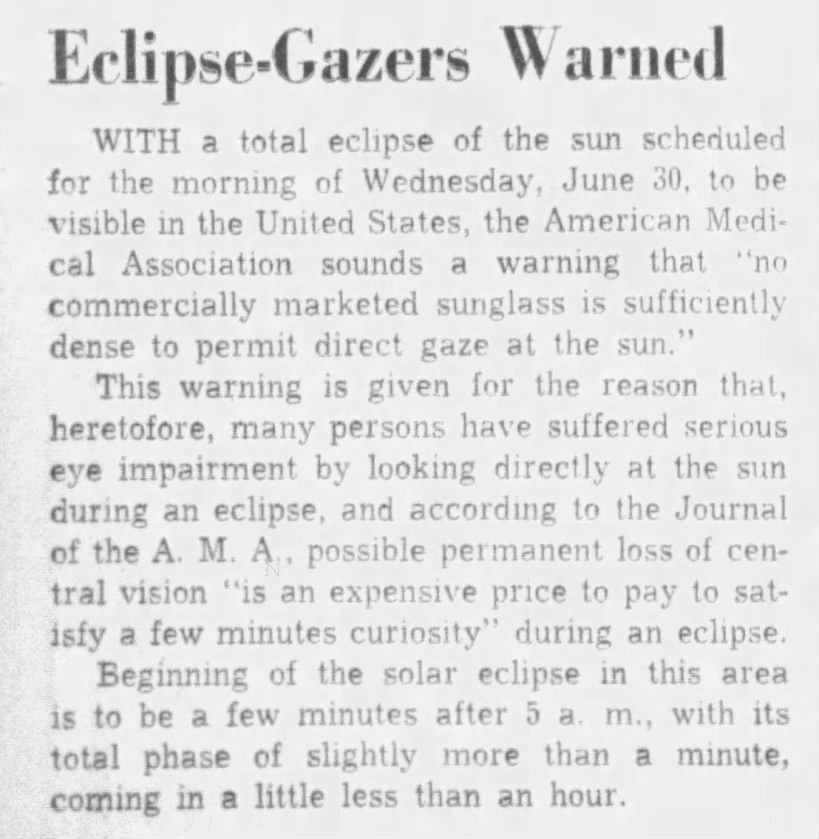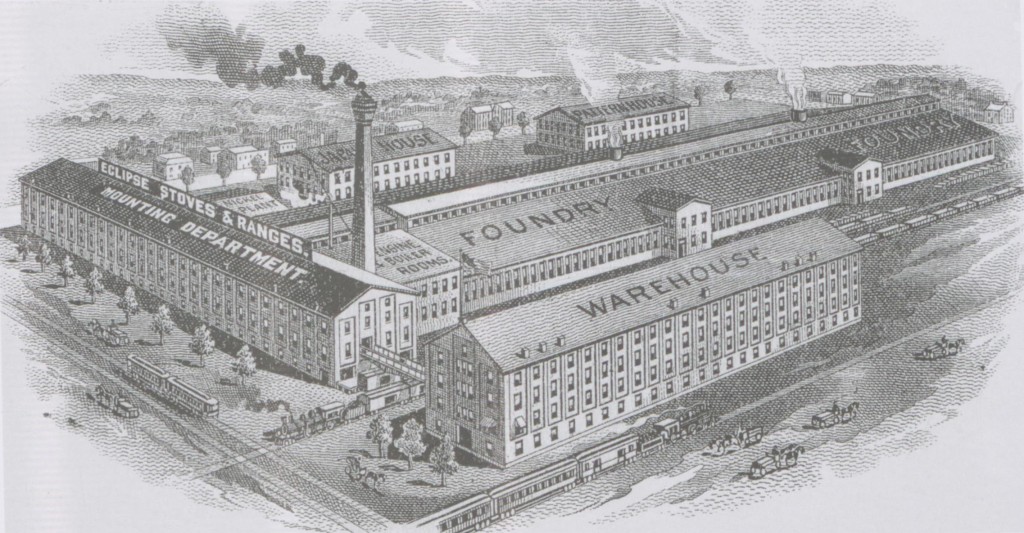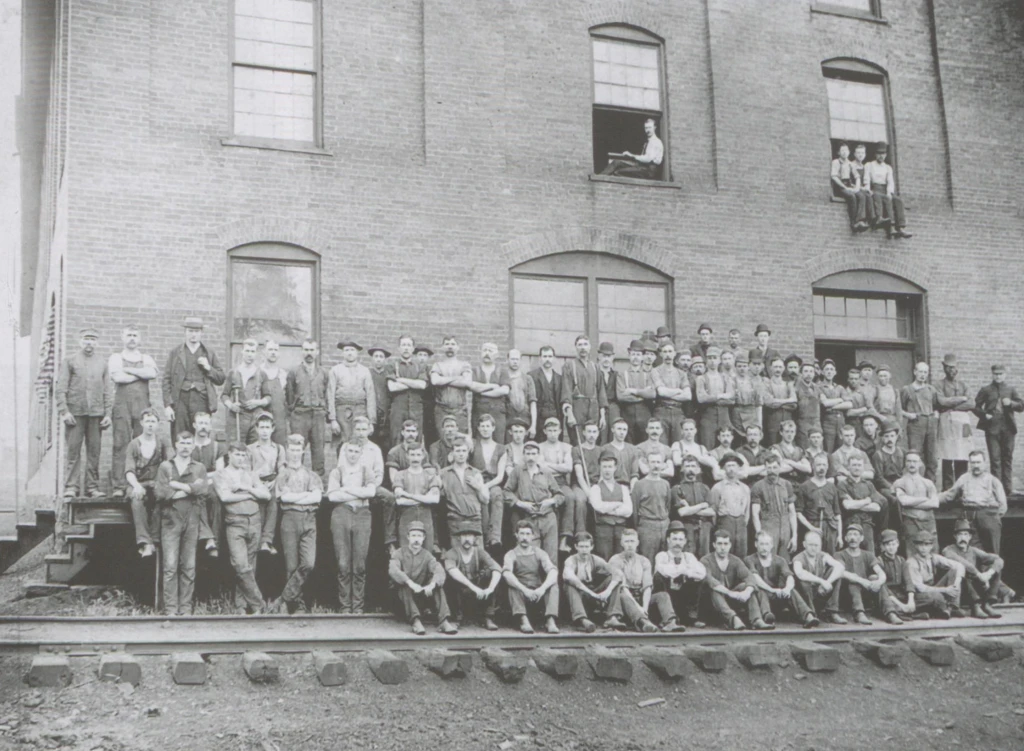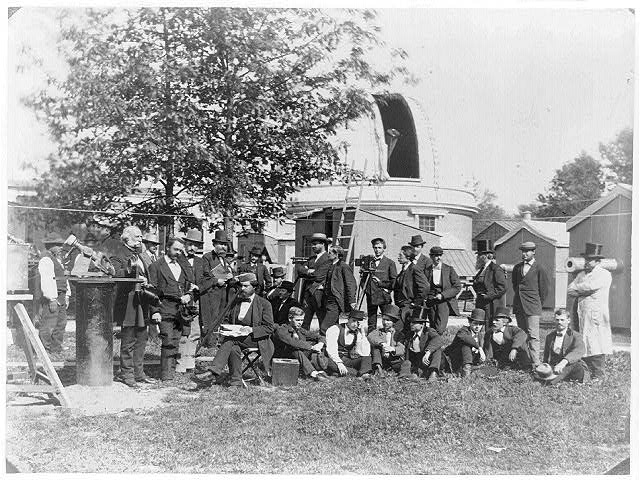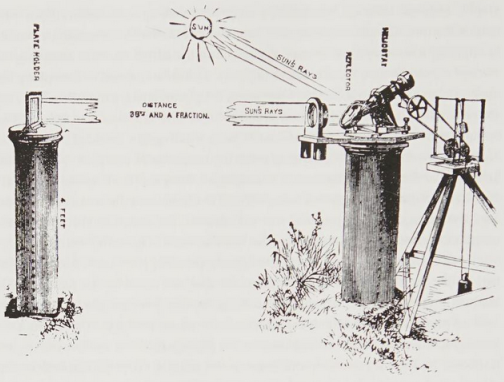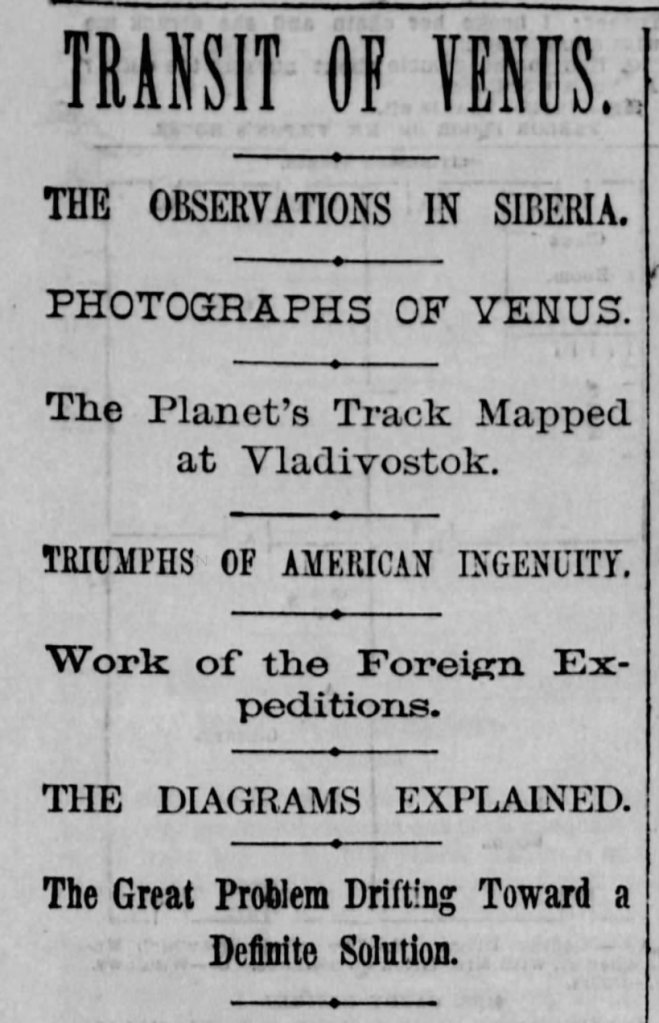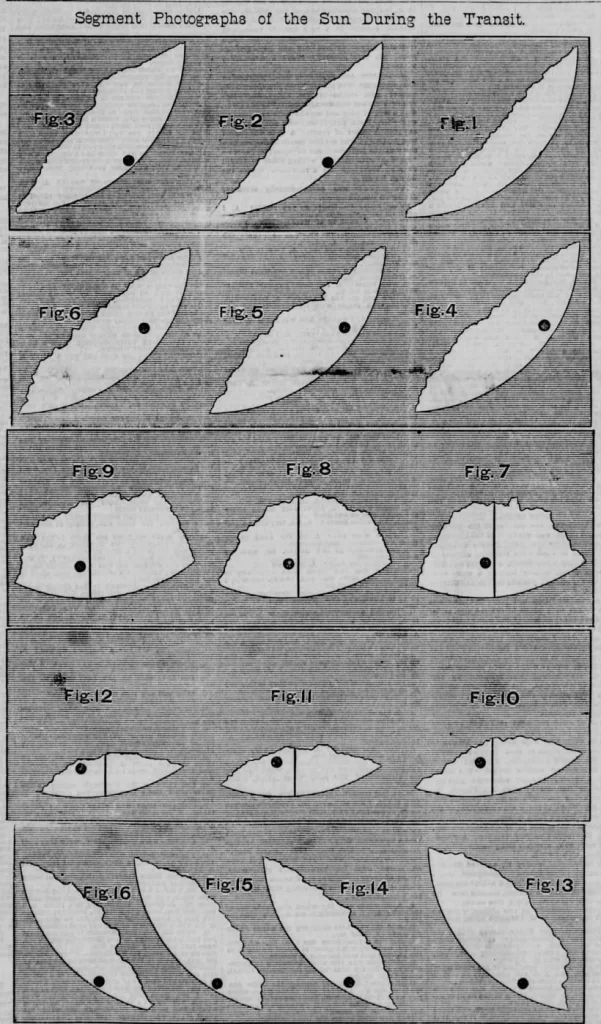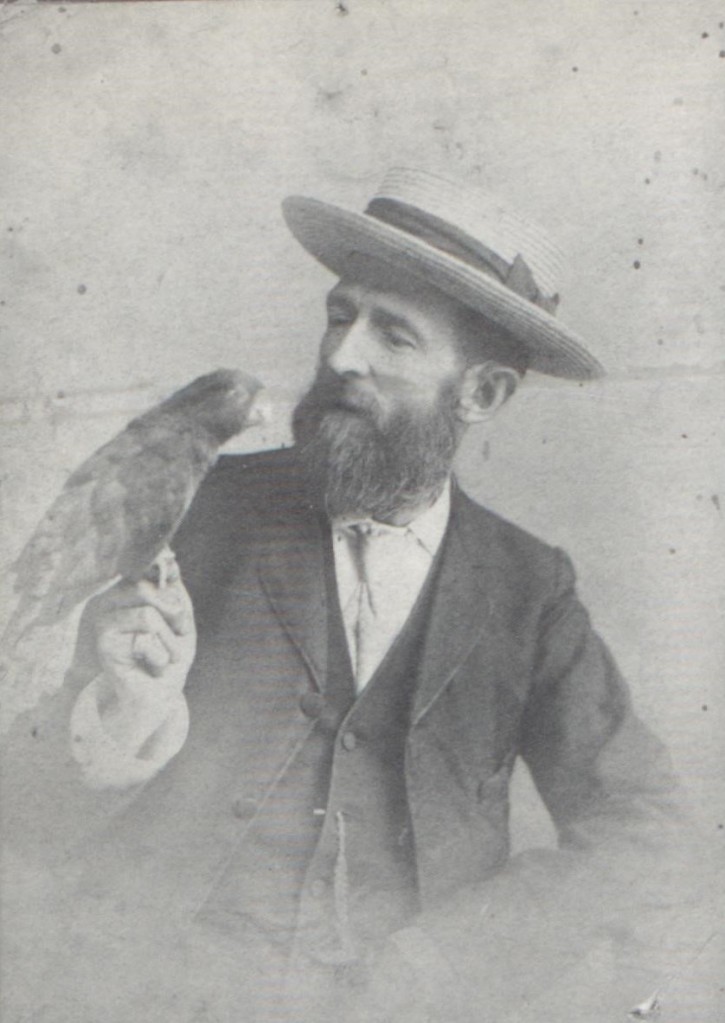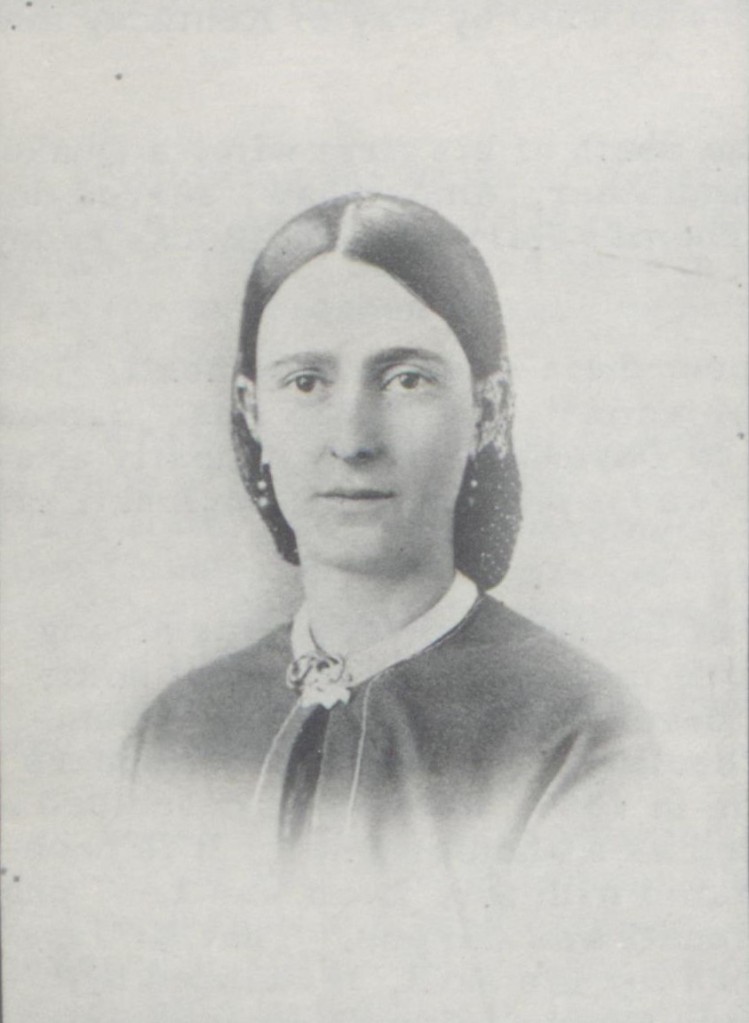There are several groups on Facebook dedicated to sharing images, stories, and memories of the history of Mansfield, Ohio. It was in a group called Abandoned Mansfield that I first saw a post about Mr. and Mrs. Fitzgerald. The original poster shared the photo shown below whose caption reads, “Mr. and Mrs. R.S. Fitzgerald. Walking from Mansfield, O. to the Pacific Coast. Started September 5, 1910.” According to the poster, “It’s unknown why they would want to do this. No word if they ever made it.”1 That sounds like a mystery for the Sherman Room!

The Fitzgeralds Come to Mansfield
Robert Stevens Fitzgerald was born October 18,1871, in Sedalia, Missouri to Joseph Hawkins Fitzgerald and Mary/Maria Overarcher (Booth/Mitchell) Fitzgerald.2 According to Presbyterian Church records, Robert was baptized in Worthington, Indiana, on January 28, 1877.3 From his earliest years, Robert and his family were frequently on the move. Some sources indicate Robert’s father passed away on April 11, 1877, in San Antonio, Texas and was buried in Spring Grove Cemetery in Cincinnati.4 No evidence has been located to confirm whether Robert was in Texas when his father died. The next record we have for Robert’s potential whereabouts is an 1880 census record for Dayton, Ohio that show Robet [Robert] Fitzgerald living with Mariah and William Mitchell; Robert is listed as William’s step-son, suggesting his mother had remarried.5

The 1909 Dayton city directory shows Robert working as the president of The Fitzgerald Company, a group incorporated in Columbus in early July with a capital stock of $25,000.8 Prior to this, Robert spent time as general manager for Business Letter Company in Dayton and the Herald cites Robert and Clara as being linked to Two Fitzgerald Advertising Company.9 In March 1909, the Herald published a short noted from J.N. Hess addressed to Mr. and Mrs. Fitzgerald. In the note, Hess states that a “Schantz Lily Water cooler” the Fitzgeralds had installed in office suite 27 of the Christian Association building must be removed and “should you insist on retaining it in said office you are hereby notified to pay rent and vacate the above offices.”10 In a much longer article following the initial note, the Herald reports the issue seems to have arisen from a misguided belief that the water cooler was made by the Dayton brewing company; at this time, the Temperance Movement condemning the consumption of alcohol was gaining popular favor throughout the United States and in 1909, sixty-three counties in Ohio went dry.11
While Robert argued, “the simple use of a Lily Water cooler in our office is not a legal cause for an order to vacate the office,” he and his wife elected to move their business elsewhere, announcing their new location in the Gibbons Arcade on March 25, 1909.12 In an almost full-page announcement in The Dayton Herald, they called the Christian Publishing Association’s order to remove the water cooler “ridiculous and unreasonable” and went on to say, “We are temperate, law-abiding and liberty-loving people, and feel competent to conduct out business affairs without interference on the part of self-constituted censors of business morals.”13

Having spent much of his early life in Dayton, Robert and Clara were perhaps soured by the water cooler debacle and moved their talents to Mansfield in early 1910. According to a Mansfield News article from September, the couple had only been in Mansfield for six months, “having come here from Cincinnati.”14 It the Fitzgeralds spent any time in Cincinnati prior to their move to Mansfield, it was too short to be officially documented. The 1910 census, taken in mid-April, lists Robert as an advertising agent in Mansfield and Clara as just a “roomer” living in his house (the census taker used this distinction for several houses in the Fitzgerald’s neighborhood for reasons we will never know). Even stranger, though, is this census reports the pair had been married for eleven years; this is not the first complication in the marriage record of Robert and Clara Fitzgerald.15
Clara J. Dawson was born August 5, 1877, in Marengo, Iowa, the daughter of Samuel R. Dawson and Josephine Carman.16 Her father was involved with a coal mining business in 1887 and a manufacturer of “newly invented [articles] and other novelties” in 1895.17 Two of the latter’s “newly invented articles” were apparently a valuable process for hardening copper and another for making Damascus steel, both of which Samuel Dawson had locked away in a safety deposit vault in case of his death.18 According the The Zanesville Signal, “the Dawson family lived in an aristocratic neighborhood,” and as Clara approached adulthood, she became a very popular debutante.19 Clara married her first husband, Walter Scott, in December 1895, a marriage that lasted only one hour.20 The following year, she married Walter’s close friend, Willard McKay; she was twenty years old at the time. Clara and Willard briefly moved to Canada to live with his family, but they appear in the 1900 census living in Alpena, Michigan.21 At some point between the taking of that census and the fall of 1904, Clara and Willard separated and Willard married Jennie Dawson (no relation to Clara) on October 16, 1904, in Detroit.22


Clara J. Dawson and Walter Scott, married for one hour. “Romance and Tragedy,” The Zanesville Signal [Zanesville, Ohio], April 3, 1896, 7.
Clara retained her McKay name until she married Robert Fitzgerald in 1908. City directories indicate Clara took up work as a teacher and moved to Mount Vernon, Ohio by 1903.23 What brought Clara to Dayton and into the arms of Robert Fitzgerald remains unclear, but her early marriages indicate she was no stranger to drama and was a little bit of a show-woman. In January 1896, she sought to capitalize on the notoriety of her short marriage to Walter Scott by publishing a book chronicling their two-year courtship.24 Fourteen years after her book deal, Clara was once again a darling of the press as she and her newest husband undertook a long walk to the West coast. The Indianapolis Sun commented in October 1910, “Mrs. Fitzgerald is a good-looking young woman with handsome brown eyes . . . [She] created quite a sensation Wednesday morning on the downtown streets when she appeared in her walking costume of khaki with the skirt cut short for walking, leggings and a broad felt hat.”25 According to the paper, the couple decided to embark on this walk “just to be out of the ordinary.”26
To the Pacific Coast or Bust
The true novelty of the Fitzgeralds’ westward journey was the two-wheeled cart they planned to take with them. Weighing just 150 pounds or so, in its close state, the cart measured four and a half feet but could extend to six feet “to furnish sleeping accommodations” for the couple.27 The width of the cart, as reported by the Mansfield News, “is 30 inches and the balloon frame is covered with heavy canvas and is painted and varnished so as to render it waterproof.”28 Furnished with a cupboard at the front that could store several days’ worth of food and cooking supplies, the cart was “an oddity in the way of a vehicle” because it was a “complete home” – dining room, living room, bedroom, and kitchen combined!29 The Democratic Banner of Mount Vernon, Ohio, reported in late July 1910 that the cart’s construction was finishing up in Mansfield and it was “designed to meet any emergencis [sic] that may arise on the trip.”30 According to the paper, Robert had been planning the trip for several months, likely to allow enough time to design and construct their eye-catching home on wheels.31
The motivation behind their trip and even their final destination varies among reports of their travels. The Indianapolis Sun suggests the couple “decided they would migrate to the great northwest and picked out Washington as the state in which they would live.”32 Several papers, including The Pittsburgh Post, list San Francisco as their final destination while others simply conclude the Fitzgeralds were heading for the Pacific coast.33 Interestingly, Clara’s second husband, Willard McKay, was living in San Mateo, California (a brisk twenty miles from San Francisco by today’s standards) in 1910.34 While it is unlikely that Clara was following Willard, the connection is nevertheless intriguing. The press coverage dedicated to the Fitzgeralds’ jaunt typically cites their motivation as being “for pleasure and health;” the Mansfield News further specifies the trip was designed for “sightseeing and the walkers will take their time to it as they are in no hurry to reach their destination.”35

Setting off on the fifth or sixth of September the Mansfield News outlined their route as passing through “Marion, Kenton, Wapakoneta, and Celina [Ohio].”36 The couple was then expected to stop in Indianapolis before moving through “southwestern Indiana, touching Vincennes and going to Cairo, Ill., after which they will cross Kentucky and Tennessee into Louisiana. Leaving New Orleans, they will follow the Southern Pacific railroad through Texas, Arizona and New Mexico into Southern California.”37
The Fitzgeralds chose what could be called “the scenic route” to California so they could, understandably, avoid cold weather conditions that would hinder their pace and progress. It was also reported that they hoped to reach New Orleans in time for Mardi Gras in February.38 They expected the trop would take close to a year to complete as they anticipate walking “at a rate of about 400 miles per month.”39 Coverage of their walk estimated the total distance of their journey to be 5,000 miles; a more direct route with modern roads would only cover about 2,500 miles.40
Their first noted “stop” was in Bucyrus, Ohio, where they “walked into [the city on September 8] and walked out again.”41 At this early stage of the journey, the pair were averaging ten miles per day.42 They were next spotted in Marion, Ohio, around September 10, a distance of about eighteen miles by today’s standards. The Marion Daily Mirror described the travelers as “fresh as daisies” and quoted Mrs. Fitzgerald as telling a reporter, “You tell the people that all those who have not enjoyed a night out of doors that they have missed a great deal.”43 On Thursday, September 22, The Weekly News in Mansfield reported they had received a postcard from Mr. and Mrs. Fitzgerald which was “written in camp at Roundhead, Ohio, and was mailed at Waynesfield.”44 According to their postcard, the Fitzgeralds were “having a fine trip and enjoying it immensely,” although they had encountered “several hills and considerable mud.”45 Their next stop was said to be Celina, Ohio, where they would be able to receive any return mail.46 A week after sending the postcard to the News, the Fitzgeralds had covered 200 miles and passed through Richmond, Indiana on their way to Indianapolis.47 The Richmond Item indicates “their only means of making money [to sustain the trip] is by selling postcards with their pictures on them” – was it one of these novelty postcards they sent back to Mansfield? Only the recipients will ever know.48
By the first of October, another fifty-two miles had been covered as the pair spent several days in Eaton, Indiana, a rather odd northerly path to have followed from Richmond.49 From Eaton, they began moving south with their eyes set on New Orleans. They passed through Indianapolis before stopping east of Irvington, Indiana. On October 12, the Indianapolis Sun reported the couple planned to “move on until they reach Kansas City, where they propose to spend the winter, after which they will attack the Rocky mountains.”50 This is the last report of their trip’s progress.

Walk This Way
On September 30, 1910, the Lake Elsinore Valley Sun-Tribune of Lake Elsinore, California commented, “That eastern people are bound to get to California one way or another is shown by . . . Mr. and Mrs. R. S. Fitzgerald, who are walking through to the Pacific coast from Mansfield, Ohio.”51 Throughout the nineteenth century, from the Louisiana Purchas through the Gold Rush and beyond, there was a peculiar fascination with finding a way to California. Despite the 1890 census defining a “closure of the American frontier,” in that there was hardly a frontier left to explore or settle, there was still a strong westward draw for Americans living in the Midwest or the Northeast. What this meant for Robert and Clara Fitzgerald was their “long tramp” out West was not a new or novel idea, and they weren’t alone in hitching a ride on the shoe leather express in 1910.
C.A. Poling and J.M. Layer left Dayton in March on their own long tramp to San Francisco. Their trip was in answer to a $1,000 bet that said they could not make the journey in 100 days. Approximately thirty-four days into the trip, they had reached Luther, Oklahoma.52 Similarly, Isador Walchell and Lewis Keller set off from Philadelphia in May en route to San Francisco. According to the Valley Spirit of Chambersburg, Pennsylvania, “these ocean-to-ocean walkers are not out after any records . . . [they] admitted that two Philadelphians had wagered bets upon the result of the walk, but that this didn’t bother them any as they were just going to keep on walking regardless of bets.”53 From Wichita, Kansas in May, “Two Muskogee women are walking to the Pacific coast for a purse of $25,000.”54 Another pair, Roy Fourbush Hansford and Terry Churchill Elmenderf, “two New York newspaper men who are on a twenty thousand-mile walk to the Pacific coast” left New York at the end of May, spending Christmas in Alabama with Frank S. Stone, the solicitor of Baldwin County.55 The final team to step onto the track to the coast in 1910 were Morris I. Roberts and Frank B. Surman (along with their English bulldog, Lady) who left Wilmington, Delaware, at the end of November, making their way to the Pacific coast “in the interest of the outdoor sports section of a New York city magazine.”56





A handful of the other people attempting to walk to the Pacific coast in 1910.
The Fitzgeralds, due to no fault of their own, were competing for press space in a pretty saturated field and the one thing designed to set them apart – their home on wheels – was not enough to garner prolonged attention. It is unfortunate as well that just as the Fitzgeralds were making progress towards Kansas City in October, the St. Louis Globe-Democrat announced: “Accompanied by a dog and horse, with a two-wheeled cart load of provision, Mr. and Mrs. Dwight Wolf of Kansas City, Kan., left last night on a 7500-mile walk.”57 Here was another married couple undertaking a long-distance walk with a two-wheeled cart. Of course, Dwight and Stella Wolf also had a dog and a horse, and they weren’t working their way to the Pacific coast. From Kansas City, the Wolfs were heading to Texas where they would then make their way eastward to Jacksonville, Florida for the winter before moving up the east coast to the Canadian border and round their way home to Kansas City through Minneapolis.58 The St. Louis paper notes this roundabout journey covering “two-thirds of the United States” was not the first long distance walking trip the pair had undertaken: “A few weeks ago the same couple, with the same outfit, walked from Kansas City to New York in ninety-five days.”59
The announcement of the Wolfs’ newest trip was published in newspapers from Georgia to California and even appeared in the Canadian press! They received a very large article on the second page of The Brooklyn Daily Eagle on June 30, 1911 (complete with photo similar to that of Robert and Clara Fitzgerald with their cart), indicating that there was popular interest in their journey and that they had made their way through Kansas, Oklahoma, Texas, Louisiana, and on all the way to New York.60

And just like the Fitzgeralds who heralded their walk as “for pleasure and health,” the Brooklyn paper notes the Wolfs “started this walking back in 1909, and then mainly on account of Woolf’s [sic] health. Then he was weighing 107 pounds and so weak that at the end of the first day’s walk all he could do was get out [of] the cot and fall on it while his wife cooked supper.”61 The established track record of Dwight Wolf and his wife, having completed two walking journeys, was arguably a more reliable story for the press to cover when compared directly to the leisurely jaunt of the Fitzgeralds.
The trip from Kansas City to Canada was touted as “the longest walk a woman has ever taken,” but, surely, the reporter conveniently forgot all the women who crossed the country on foot out of necessity in the previous century.62 With the completion of the Transcontinental Railroad in 1869 and the introduction of the Model T in 1908, long distance walking in 1910 was a luxury of those who had the time to do it. What set the Fitzgeralds and the Wolfs apart from the pack was that they were walking on their own terms as opposed to responding to a lucrative bet or seeking purposeful publicity – the California press expressly notes, “it is through no wager that [the Fitzgeralds] are making the trip, but simply taking the trip for the novelty of walking through.”63 The myriad of other pedestrians crisscrossing the country all had what could be seen as selfish motivations. But in pursuing monetary glory or notoriety, they were all following in the well-worn footsteps of the feats of endurance walking that had come before them. Yet another contender entering the already crowded walking space of 1910 was Edward Payson Weston, who, at a spry seventy-one years old, was endeavoring to walk from the Pacific coast to the Atlantic.64 It had only been fifty years since Weston had first proven he could make a name for himself through the exercise of walking, and he kick started what author Gary Yanker has dubbed “the Pedestrian Age.”65

According to Matthew Algeo, Weston’s rise to pedestrian fame “began with a wager.”66 The year was 1860 and the upcoming presidential election was a hot topic of conversation. Weston strongly believed Abraham Lincoln would lose the election while his friend, George Eddy, was convince Lincoln would win. Their casual debate turned into a bet – whoever’s stance was incorrect would have to walk from the State House in Boston to the Capital in Washington, a distance of almost 500 miles, in ten consecutive days to arrive in time for the inauguration on March 4. As history would have it, Lincoln won the election and Weston was on the hook for a few good miles of drudgery.
He left Boston on the morning of February 22 and had calculated his route to arrive in Washington on the morning of March 4.67 News of his journey appeared in papers from Bangor, Maine to California. The Morning Democrat of Davenport, Iowa, called him a fool and said, “if he succeeds in reaching Washington City by the evening of the 3d of March, his perseverance and pluck are to be rewarded with six quarts of peanuts.”68 Weston encountered crowds of excited spectators along the way as well as a few individuals looking to collect on debts owed to them and these distractions caused him to fall behind schedule. He finally arrived in Washington at 5:00pm on Monday, March 4, five hours after the inauguration.69 As Algeo notes, Weston, “had failed to pay off his bet but had won widespread admiration;” somehow on the eve of the American Civil War, Weston’s walk “south across the Mason-Dixon Line from New England to Washington . . . represented a rare and welcome symbol of unity in a nation about to be violently fractured.”70
Weston exhibited a remarkable stamina in this extended feat of endurance, and he volunteered his pedestrian prowess to the Union cause during the war. Although he declared in 1862 that he hoped “soon to enter a more laudable business than pedestrianism,” he spent much of his time in the coming decades making and taking bets to push his walking feats further, even taking his talents overseas to England.71 But not everyone was a fan or even impressed by his “exhibitionist walking” stunt. The Semi-Weekly Wisconsin in Milwaukee asked, “Seriously . . . what has Weston achieved that justifies all the fuss made over him? Has he exhibited any more noble, admirable, or praiseworthy qualities than the horse that performs an extraordinary feat of pedestrianism?”72 The only positive attribute the paper could find in Weston’s celebrity was “if it shall have the effect to popularize among Americans that much neglected species of exercise, pedestrianism.”73 As Algeo argues, Weston did indeed popularize pedestrianism on both an amateur and professional level, giving rise to America’s first spectator sport in which athletes competed in foot races akin to late NASCAR event where they set distance records by traversing circles around a track inside stadiums like Madison Square Garden in New York.74 To this point, author John Cumming has made the bold choice to label Weston “the man who invented walking.”75
As his seventieth birthday approached, Weston announced in January 1909 that he was “off for another good sized walk . . . going clear across the continent this time [with the] hope to set a mark even the youngsters won’t touch for a while.”76 This walk would take him from New York to San Francisco and, while Weston was not the first to attempt this feat, his widely publicized exploits of the past inspired many a copycat challenger to follow this same westward path in 1910.77 When Weston turned his sights to the opposite direction, The Mansfield News noted, “the spectacle of Weston, at 71 years of age, walking from the Pacific to the Atlantic coast . . . preaches a powerful sermon on the value of continued and careful exercise in the open.”78 Clara Fitzgerald and Stella Wolf certainly agreed, and both sang the praises of outdoor living, with Stella quoted in 1911 as saying, “I can hardly bear now to be under a roof for long. It seems stifling and unhealthy. I am always eager to go out again. I don’t know how I am ever going to be able to stop this tramping life.”79
What Happened to the Fitzgeralds?
When they set off in early September, the Fitzgeralds were likely unaware of how many others were also attempting to walk to the Pacific coast, but their ambitions were not to win any races or claim any records. So even if the press could not document every step of their journey, did they make it to California? The simple answer is most probably that they did not continue on past Indiana. Robert and Clara appear in the 1913 city directory for La Porte, Indiana, showing Robert working as an advertising department manager for M. Rumley Company and the couple’s residence is listed as 906 Tyler.80 Their story only gets more complicated from here. In July 1918, The Dayton Herald reported that Robert had been granted a divorce from Clara, but the pair appear in the 1920 census renting a house in Sausalito, California.81 A year later, they are listed in the city directory for Atlanta, Georgia, where Robert is working as a manager for Business Builders, an advertising company.82
These are all records linking Robert S. and Clara D. (Dawson) Fitzgerald and, of course, it is possible that there was more than one pair of Robert S. and Clara D. moving around the country together at this time. The consistency of Robert’s employment falling within advertising in each of these records gives some credibility to the idea that these are in fact the same Robert and Clara who wanted to push their home on wheels to California.

Why they would continue to live together and traverse the country if they had divorced in 1918 is unclear.
Adding to the complexity of the Fitzgeralds’ post-walk whereabouts is a marriage license application from Hancock, Indiana, dated August 5, 1924, listing Robert Stevens Fitzgerald and Clara Dawson Fitzgerald as the couple to be joined in matrimony. Both Robert and Clara completed their own copies of the application. In his application, Robert states that he had been married twice and his previous marriage ended in divorce in June 1924. Clara, on the other hand, says her previous marriage ended in July 1917.83 Given that census records and directory listings show the two living together as recently as 1921, it is difficult to believe Robert had married again and divorced by June 1924.84 It is most likely that these two either did not fully understand how to answer the questions on the application or were being purposefully misleading (we do not know if they filled the applications out in the presence of each other, but it would be off if they didn’t). For the question of how many times she had been married, Clara put twice even though her marriage to Robert in 1908 was already her third marriage.

Newspaper clippings suggest there was a business and possible geographic separation between Robert and Clara by late 1921 as The Cincinnati Enquirer shows Clara running a beauty parlor in the city.85 On her 1924 marriage license application, Clara lists her occupation as “beauty parlor owner and operator,” she just doesn’t specify where her parlor was. According to the Greenville Daily News in Greenville, Ohio, Clara opened a new shop in that city in September 1922.86 Her shop changed name in 1926 and she continued in this line of work at least until 1930 when, one can only guess, Robert’s work took them to Tampa, Florida.87 The 1930 census shows them renting a house in the sunshine state where Robert was working as a printing salesman.88 By the 1940s, the pair had found their way back to Dayton where Robert found steady work as a salesman.89 The 1950 census lists them both working as salespeople for “specialties retail,” Robert in Business and Clara in Clothing.90 On November 19, 1953, Robert passed away at the Miami Valley hospital in Dayton.91 His funeral was held on November 22 and he was buried in Spring Grove Cemetery not far from his father, Joseph.92 Clara, not one to stay still for long, remarried one last time, tying the know with Raymond L. Hull in Indiana on July 21, 1956 – on her application for a marriage license, she says this is her first marriage but we know better, Clara!93 It is believed Clara passed away on May 25, 1965 at the age of eighty-seven.94
- Donn Mengert, 2024, “This photo shows a man and a woman on either side of a hand-drawn cart bearing the words: ‘Walking to the Pacific Coast.’,” Facebook, posted March 9, 2024. ↩︎
- Available records like Robert’s death certificate list his mother as Maria Mitchell, while his 1940 Social Security application lists her as Maria Booth and his 1924 marriage license lists her simply as Booth (the application for the license lists her as Mary Overarcher Mitchell). It is most likely that her maiden name was Booth and Mitchell became her surname when she remarried following Joseph’s death. See: “Ohio Deaths, 1908-1953,” database with images, FamilySearch (May 21, 2014), 1953 > 73401-76200 > image 3018 of 3168; “United States, Social Security Numerical Identification Files (NUMIDENT), 1936-2007”, database, FamilySearch (February 10, 2023), Robert Stevens Fitzgerald; “Indiana Marriages, 1811-2019”, FamilySearch (March 7, 2024), Entry for Robt S Fitsgerald and Joseph L Allen, 5 Aug 1924; “Indiana Marriages, 1780-1992”, FamilySearch (January 13, 2020), Robert Stevens Fitzgerald, 1924. ↩︎
- “Robert Stevens Fitzgerald Baptism Record,” Presbyterian Historical Society; Philadelphia, PA, USA; US, Presbyterian Church Records, 1701-1907; Book Title: 1903-1918. Available on Ancestry.com. ↩︎
- “Joseph Hawkins Fitzgerald – Spring Grove Cemetery Burial Information for Joseph H. Fitzgerald,” Family Search, Individual Page with Sources, https://www.familysearch.org/tree/person/sources/MYSJ-QBJ; “Search Results for ‘Joseph H Fitzgerald’,” Spring Grove, https://www.springgrove.org/locate-a-loved-one/spring-grove-cemetery/. ↩︎
- Year: 1880; Census Place: Dayton, Montgomery, Ohio; Roll: 1051; Page: 105a; Enumeration District: 151. Available on Ancestry.com. ↩︎
- “1908 Record of Marriage of Robert Stevens Fitzgerald and Clara J. McKay,” Presbyterian Historical Society; Philadelphia, PA, USA; US, Presbyterian Church Records, 1701-1907; Book Title: 1903-1918. Available on Ancestry.com. ↩︎
- “Wedding Bells,” The Dayton Herald, December 3, 1908, 8. ↩︎
- Williams’ Dayton City Directory (Cincinnati, OH: The Williams Directory Company, Publishers, 1909), 420. “New Concern to Promote Stocks,” The Dayton Herald, July 9, 1909, 15. ↩︎
- Williams’ Dayton City Directory (Cincinnati, OH: The Williams Directory Co. Publishers, 1908), 440. “Lily Water, Not Rent, Cause of Order to Move,” The Dayton Herald, July 29, 1910, 12. ↩︎
- The Dayton Herald, March 22, 1909, 2. ↩︎
- “Lily Water, Not Rent, Cause of Order to Move,” The Dayton Herald, July 29, 1910, 12. Lloyd Sponholtz, “The Politics of Temperance in Ohio, 1880-1912,” Ohio History Journal 85, No. 1 (Winter 1976): 9. ↩︎
- The Dayton Herald, March 25, 1909, 8. ↩︎
- Ibid. ↩︎
- “Will Start Tuesday Morning on Walk to the Pacific Coast,” Mansfield News, September 3, 1910, 5. ↩︎
- The 1910 Mansfield city directory shows Robert working as a representative for International Correspondence Schools and lists the Desoto Hotel as the Fitzgeralds’ residence. See Mansfield Official City Directory (Akron, OH: The Burch Directory Company, 1910): 172. “1910 Overview,” United States Census Bureau, https://www.census.gov/history/www/through_the_decades/overview/1910.html.Year: 1910; Census Place: Mansfield Ward 4, Richland, Ohio; Roll: T624_1225; Page: 5b; Enumeration District: 0188; FHL microfilm: 1375238. ↩︎
- “Clara D. Fitzgerald Marriage to Raymond L. Hull, 1956,” Indiana, U.S., Marriages, 1810-2001 [database on-line]. Provo, UT, USA: Ancestry.com Operations, Inc., 2014; “Clara J. Scott marriage to Willard L. McKay, 1896,” Iowa, U.S., Select Marriages Index, 1758-1996 [database on-line]. Provo, UT, USA: Ancestry.com Operations, Inc., 2014. ↩︎
- The Des Moines Register, September 2, 1887, 7; The Gazette [Cedar Rapids, Iowa], February 12, 1895, 1. ↩︎
- “Verdict of Coroner’s Jury,” Sioux City Journal [Sioux City, Iowa], December 27, 1895, 1. ↩︎
- “Romance and Tragedy,” The Zanesville Signal [Zanesville, Ohio], April 3, 1896, 7. ↩︎
- Ibid. ↩︎
- “Quite Romantic,” The Dayton Herald, November 17, 1896, 7. Year: 1900; Census Place: Alpena Ward 5, Alpena, Michigan; Roll: 699; Page: 5; Enumeration District: 0013. ↩︎
- “1904 Marriage Record for Willard L. McKay and Jennie Dawson,” Michigan Department of Community Health, Division of Vital Records and Health Statistics; Lansing, MI, USA; Michigan, Marriage Records, 1867-1952; Film: 83; Film Description: 1904 Saginaw-1905 Barry. ↩︎
- F.M. French’s Mt. Vernon City and Knox County Farmer’s Directory (F.M French, 1903):115. ↩︎
- “Romance of Real Life,” The Inter Ocean [Chicago, Illinois], January 21, 1896, 10. ↩︎
- “Taking Walk to Pacific Coast,” Indianapolis Sun, October 12, 1910, 2. ↩︎
- Ibid. ↩︎
- “Man and Wife Push Cart on Long Trip,” The Chronicle-Telegram [Elyria, Ohio], July 29, 1910, 7. “Will Start Tuesday Morning on Walk to the Pacific Coast,” Mansfield News, September 3, 1910, 5. ↩︎
- “Will Start Tuesday Morning on Walk to the Pacific Coast,” Mansfield News, September 3, 1910, 5. ↩︎
- “Man and Wife Push Cart on Long Trip,” The Chronicle-Telegram [Elyria, Ohio], July 29, 1910, 7. ↩︎
- “Couple to Walk Across the Continent,” The Democratic Banner [Mount Vernon, Ohio], July 29, 1910, 5. ↩︎
- Ibid. ↩︎
- “Taking Walk to Pacific Coast,” Indianapolis Sun, October 12, 1910, 2. ↩︎
- “Carry a Complete Home with Them,” The Pittsburgh Post, September 12, 1910, 7. ↩︎
- Year: 1910; Census Place: Township 1, San Mateo, California; Roll: T624_104; Page: 27a; Enumeration District: 0048; FHL microfilm: 1374117. “Willard Leslie McKay World War I Draft Registration Card, 1918,” Available on Ancestry.com. By the end of the decade, Willard was working as a candy maker in San Francisco. See: Crocker-Langley San Francisco Directory (San Francisco, CA: H.S. Crocker Co., Inc., 1919): 1099. ↩︎
- The Greenville Journal notes the couple believed the long walk would “restore [Robert’s] health, failing under long indoor confinement.” See “Mansfield,” The Greenville Journal [Greenville, Ohio], September 1, 1910, 2. “Man and Wife Push Cart on Long Trip,” The Chronicle-Telegram [Elyria, Ohio], July 29, 1910, 7; “Couple to Walk Across the Continent,” The Democratic Banner [Mount Vernon, Ohio], July 29, 1910, 5; “Will Start Tuesday Morning on Walk to the Pacific Coast,” Mansfield News, September 3, 1910, 5. ↩︎
- “Will Start Tuesday Morning on Walk to the Pacific Coast,” Mansfield News, September 3, 1910, 5. ↩︎
- Ibid. ↩︎
- Ibid. ↩︎
- Ibid. ↩︎
- Ibid. ↩︎
- “Traveling to Pacific Coast,” The Bucyrus Evening Telegraph, September 9, 1910, 3; “Carry a Complete Home with Them,” The Pittsburgh Post, September 12, 1910, 7; “Pushing Their Home Ahead,” The Daily Times [New Philadelphia, Ohio], September 13, 1910, 2. If one is to believe the news out of Tacoma, Washington, they did not make it to Bucyrus until September 26. See “Transport Home on Small Cart,” The Tacoma Daily, September 28, 1910, 7. ↩︎
- “Carry a Complete Home with Them,” The Pittsburgh Post, September 12, 1910, 7. ↩︎
- “First Leg of a Long Tramp,” The Marion Daily Mirror, September 10, 1910, 8. ↩︎
- “Enjoying Their Trip,” The Weekly News, September 22, 1910, 10. ↩︎
- Ibid. ↩︎
- Ibid. ↩︎
- “Pedestrians Are in Richmond on Hike,” The Richmond Item [Richmond, Indiana], September 29, 1910, 1. ↩︎
- Ibid. ↩︎
- “To Pacific Coast,” Palladium-Item [Richmond, Indiana], October 1, 1910, 2. ↩︎
- “Taking Walk to Pacific Coast,” Indianapolis Sun, October 12, 1910, 2. ↩︎
- Lake Elsinore Valley Sun-Tribune, September 30, 1910, 8. ↩︎
- “To Start Long Tramp,” The Dayton Herald, March 24, 1910, 12. “Walking to Pacific Coast,” Antlers News-Record [Antlers, Oklahoma], May 13, 1910, 1. ↩︎
- “Ocean to Ocean Walkers, Harrisburg Daily Independent, May 17, 1910, 12. “Ocean to Ocean Walkers,” Valley Spirit (Weekly) [Chambersburg, Pennsylvania], May 25, 1910, 3. ↩︎
- The Wichita Eagle, May 24, 1910, 4. ↩︎
- “Newspaper Men Are Walking to Pacific,” The Huntsville Times [Huntsville, Alabama], December 28, 1910, 7 (emphasis added). “Two Young Men on Journey 20,000 Miles,” The Sentinel [Winston-Salem, North Carolina], October 25, 1910, 2. ↩︎
- “Walking to Pacific Coast,” The York Dispatch [York, Pennsylvania], December 2, 1910, 15. ↩︎
- “Couple Start on Long Walk,” St. Louis Globe-Democrat, October 20, 1910, 4 (emphasis added). ↩︎
- Ibid. ↩︎
- Ibid. ↩︎
- “Man and Wife Here on 8,000-Mile Tramp,” The Brooklyn Daily Eagle, July 30, 1911, 2. ↩︎
- Ibid. ↩︎
- Ibid. ↩︎
- Lake Elsinore Valley Sun-Tribune, September 30, 1910, 8. ↩︎
- “Edward Payson Weston,” The Evening Mail [Stockton, California], February 16, 1910, 4. ↩︎
- Gary Yanker, Gary Yanker’s Sportwalking (Chicago: Contemporary Books, 1987): 9. ↩︎
- Matthew Algeo, Pedestrianism: When Watching People Walk Was America’s Favorite Spectator Sport (Chicago: Chicago Review Press, 2014): 1. ↩︎
- Algeo, 1, 5. ↩︎
- “A Fool on His Travels,” The Morning Democrat [Davenport, Iowa], March 2, 1861, 2. ↩︎
- Algeo, 11. ↩︎
- Algeo, 10-11. ↩︎
- Algeo, 12. ↩︎
- “The Latest Here,” Semi-Weekly Wisconsin, December 4, 1867, 1. Algeo, 15. ↩︎
- Ibid. ↩︎
- Matthew Algeo, Pedestrianism: When Watching People Walk Was America’s Favorite Spectator Sport. ↩︎
- John Cumming, Runners and Walkers: A Nineteenth Century Sports Chronicle (Chicago: Regnery Gateway, 1981). ↩︎
- “Veteran Walker to Cross the Continent,” The Salt Lake Herald-Republican [Salt Lake City, Utah], January 23, 1909, 7. ↩︎
- One of the earliest documented attempts at walking to the Pacific coast “for fun” was in 1895 by B.H. Mills who began in Appleton, Wisconsin. He did not complete the trip after falling ill in Baraboo, Wisconsin. See Baraboo Republic, August 21, 1895, 5. In 1902, Harris Adonis made a wager with two gentlemen in Massachusetts that he would walk across the country to San Francisco pushing s wheelbarrow. To add to the adventurer’s challenge, Adonis was required to make $500 in cash along the way without begging and he was also required to get married. According to reports out of Kansas and New York, Adonis married a Kansas girl in that summer and they continued the walk to California, arriving in the golden state in December. See “A Fair One in Dayton,” Dayton Daily News, March 18, 1902, 2; “He Has Found Wife at Last,” The Topeka Daily Capital, June 22, 1902, 6; “Trundles Wheelbarrow Across the Continent,” The San Francisco Call and Post, December 20, 1902, 9. George Tisell, a “globe trotter” from Philadelphia took on the challenge in 1905 in response to a $2000 bet. Later reports indicate he did complete this feat, earning the “world’s record for pedestrianism.” See “Walking to Pacific Coast on $2000 Bet,” The Philadelphia Inquirer, September 21, 1905, 6; “George W. Tisell is Out on a 2,000 Mile Jaunt,” The Omaha Daily News, July 7, 1907, 22. ↩︎
- The Mansfield News, February 28, 1910, 6. ↩︎
- “Man and Wife Here on 8,000-Mile Tramp,” The Brooklyn Daily Eagle, July 30, 1911, 2. ↩︎
- Smith’s Directory of LaPorte, Indiana (Gary, IN: Edgar Smith, Publisher, 1913), 88. ↩︎
- “Divorce Records,” The Dayton Herald, July 24, 1918, 5. Year: 1920; Census Place: Sausalito, Marin, California; Roll: T625_120; Page: 8B; Enumeration District: 103.
↩︎ - Atlanta City Directory (Atlanta, GA: Atlanta City Directory, Co., 1921), 485. ↩︎
- “1924 Application for Marriage License, Robert Stevens Fitzgerald and Clara Dawson Fitzgerald,” Applications, V. 13 (from p. 150) 1923-1924 Applications, v. 14-15, 1924-1925. Available on FamilySearch. ↩︎
- No marriage license has been located for their 1908 wedding, there is just a list of wedding dates and names available from the Third Street Presbyterian Church. It is possible that Robert had been married prior to this date but no reliable evidence to that effect has been found thus far. See: “Robert Stevens Fitzgerald Baptism Record,” Presbyterian Historical Society; Philadelphia, PA, USA; US, Presbyterian Church Records, 1701-1907; Book Title: 1903-1918. Available on Ancestry.com. ↩︎
- “Beauty Department, Clara D. Fitzgerald – Advertisement,” The Cincinnati Enquirer, October 9, 1921, 27. ↩︎
- “To Whom it May Concern,” Greenville Daily News [Greenville, Ohio], September 5, 1922, 4. ↩︎
- The Daily Advocate [Greenville, Ohio], January 8, 1926, 5. Year: 1930; Census Place: Tampa, Hillsborough, Florida; Page: 10A; Enumeration District: 0017; FHL microfilm: 2340053. ↩︎
- Year: 1930; Census Place: Tampa, Hillsborough, Florida; Page: 10A; Enumeration District: 0017; FHL microfilm: 2340053. ↩︎
- Year: 1940; Census Place: Dayton, Montgomery, Ohio; Roll: m-t0627-03256; Page: 10A; Enumeration District: 94-188; Williams’ Dayton City Directory (Cincinnati, OH: The Williams Directory Company, Publishers, 1942), 563; Williams’ Dayton City Directory (Cincinnati, OH: The Williams Directory Company, Publishers, 1944), 418; Williams’ Dayton City Directory (Cincinnati, OH: The Williams Directory Company, Publishers, 1946), 422. ↩︎
- National Archives at Washington, DC; Washington, D.C.; Seventeenth Census of the United States, 1950; Year: 1950; Census Place: Van Buren, Montgomery, Ohio; Roll: 4212; Page: 73; Enumeration District: 57-188. ↩︎
- “Robert S. Fitzgerald – Obituary,” Dayton Daily News, November 22, 1953. ↩︎
- “Robert S. Fitzgerald – Obituary,” Dayton Daily News, November 22, 1953. “Search Results for ‘Joseph H Fitzgerald’, Nearby Burials” Spring Grove, https://www.springgrove.org/locate-a-loved-one/spring-grove-cemetery/. ↩︎
- “1956 Application for Marriage License, Clara D. Fitzgerald and Raymond L. Hull,” Marriage licenses, Circuit Court, Wayne County, Indiana, v. 225, May 26, 1956 – Jun 30, 1956. Available on FamilySearch. On the application she also says her previous marriage ended in death in 1953. ↩︎
- “Clara D. Hull in the Ohio, U.S., Death Records, 1908-1932, 1938-2018.” Available on Ancestry. ↩︎

